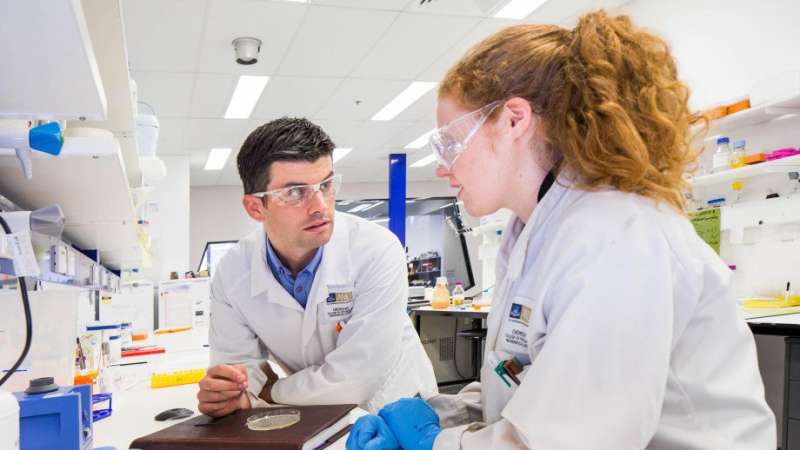Study tracks inner workings of the brain with new biosensor

An international team of scientists have taken an important step towards gaining a better understanding of the brain's inner workings, including the molecular processes that could play a role in neurological disorders.
The research team has used a new biosensor to optically track the movements of the neurotransmitter glycine - a signalling molecule in the brain - for the first time.
Lead researcher Associate Professor Colin Jackson from The Australian National University (ANU) said the new study would help scientists gain more insight into neurological disorders that occur due to dysfunctional neurotransmitter activity.
"To understand how the brain works at the molecular level and how things can go wrong, we need to understand the release and uptake of neurotransmitters," said Associate Professor Jackson from the ANU Research School of Chemistry.
"Neurotransmitters are too small to see directly, so we made a new biosensor for them."
Glycine is a neurotransmitter in the central nervous system, including in the cortex, spinal cord, brainstem and retina. It plays a role in neuronal communication and learning, and also in processing motor and sensory information that permits movement, vision and hearing.
The research team designed and made a protein to bind glycine and fused it with two other proteins that are fluorescent.
"When the binding protein binds to glycine, the fluorescent proteins change their relative positions and we see a change in fluoresce that we can monitor with a special microscope," Associate Professor Jackson said.
"There was previously no way to visualise the activity of glycine in brain tissue - we can do this now, which is exciting.
"In the future, we want to make sensors for other neurotransmitters and to use our sensor to look at the molecular basis of certain neurological disorders."
The research was funded by the Human Frontiers in Science Fellowship Program, which funded Associate Professor Jackson's team at ANU and researchers at the University of Bonn in Germany and the Institute of Science and Technology in Austria.
Professor Christian Henneberger's team at the University of Bonn in Germany assisted in design of the sensor and developed the techniques to use the new biosensor in living brain tissue. This enabled them to see how glycine levels change in real time in response neuronal activity and how glycine is distributed in living brain tissue.
"The sensor allowed us to directly test important hypotheses about glycine signalling. We also discovered that, unexpectedly, glycine levels change during neuronal activity that induces learning-related synaptic changes," Professor Henneberger said.
"We are following up our study by further exploring the mechanisms that govern glycine's influence on information processing in the healthy brain and also in disease models."
The research is published in Nature Chemical Biology.
More information: William H. Zhang et al. Monitoring hippocampal glycine with the computationally designed optical sensor GlyFS, Nature Chemical Biology (2018). DOI: 10.1038/s41589-018-0108-2
Journal information: Nature Chemical Biology
Provided by Australian National University
















